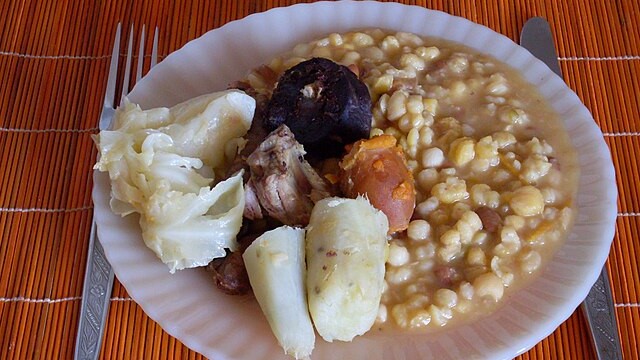Across the scattered volcanic islands of Cabo Verde, the air often carries the scent of something slow and deeply seasoned. In kitchens from Mindelo to Praia, pots simmer for hours, their contents transforming into the national dish: cachupa. More than a meal, it is a vessel of history, an emblem of hospitality, and a marker of home.
The stew’s origins are humble. Born in rural fields, where scarcity demanded ingenuity, cachupa began as a farmer’s staple—corn, beans, and root vegetables coaxed into a dish hearty enough to sustain long days of labor. Over time, it evolved into something celebratory, appearing on wedding tables, during religious festivals, and at the center of leisurely Sunday gatherings.
From Field to Pot
The foundation is always the same: hominy corn and beans, cooked low and slow until tender. From there, the variations unfold. Some preparations remain austere—cachupa pobre (“poor man’s cachupa”)—built on vegetables alone. Others, known as cachupa rica (“rich cachupa”), are layered with pork ribs, smoked sausage, chicken, or even fish such as tuna or mackerel.
Cassava, sweet potato, green bananas, kale, and squash are common additions, each contributing its own color and texture to the stew’s mosaic. Regional and family preferences shape the details; no two pots are quite alike, yet each is unmistakably cachupa.
A Dish Measured in Hours, Not Minutes
The making of cachupa resists haste. Ingredients are often soaked overnight, the pot left to bubble gently through much of the day. Its preparation is as much an act of gathering as of cooking—a process that draws family members into the same space, bound by conversation and the shared anticipation of a meal worth waiting for.
The stew’s second life, cachupa refogada, is perhaps its most cherished form. Leftovers are reheated in a skillet with onions and oil, sometimes topped with a fried egg, and served alongside strong coffee. For many, this breakfast carries the taste of childhood mornings and the unhurried hours of a Sunday at home.
Beyond the Islands
Cape Verdean communities abroad have carried cachupa across the Atlantic and into cities such as Boston, Rotterdam, and Lisbon. In these diaspora kitchens, the dish retains its role as a cultural anchor, appearing at community gatherings, family celebrations, and neighborhood festivals. It turns up in song—immortalized by Cesária Évora—and even in street food stalls, where vendors offer quick versions without compromising its essential character.
Whether served in a mountain village or a city apartment, cachupa remains a distillation of Cabo Verde itself: resilient, warm, and layered with the influences of land and sea. It tells a story in every slow-simmered bite—a story of survival, adaptation, and belonging.
Sources:
- Lobban, Richard A. Cape Verde: Crioulo Colony to Independent Nation. Westview Press, 1995.
- Davidson, Alan. The Oxford Companion to Food. Oxford University Press, 2014.
- Fernandes, Gabriel. “Cuisine and Cultural Identity in Cape Verde.” African Arts, vol. 40, no. 3, Autumn 2007.


